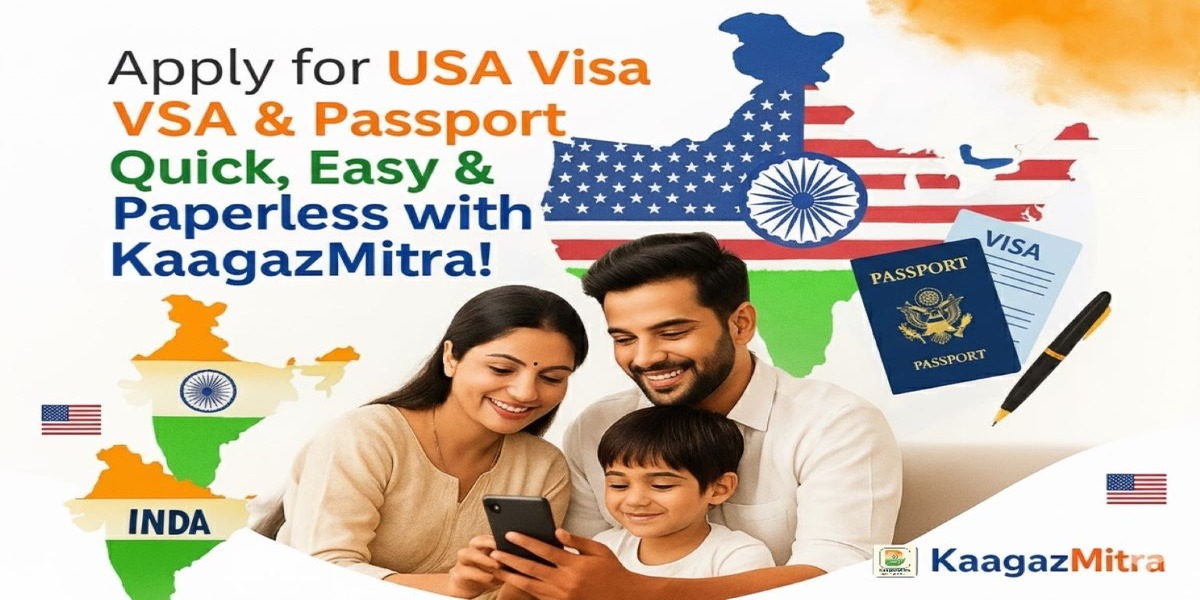Your Guide to U.S. Visas and Indian Passports
Published on September 09, 2025

Navigating the world of international travel can seem daunting, especially when it comes to the necessary paperwork. Two of the most important documents you'll encounter are passports and visas, and it's crucial to understand the difference. At Kaagaz Mitra, your trusted digital saathi, we're here to simplify the process for you.
What is a Passport?
Think of a passport as your official identity card for international travel. It's a document issued by your home country's government that certifies your identity and citizenship. For Indian citizens, an Indian Passport is essential for traveling outside of India.
- Purpose: To prove who you are and that you are a citizen of India.
- Issued by: The Government of India.
- When you need it: To exit and re-enter India, and to apply for visas from other countries.
What is a Visa?
A visa, on the other hand, is an official permission slip granted by a foreign country that allows you to enter, stay within, or leave that country. A U.S. visa, for instance, is an endorsement in your Indian passport that shows you are allowed to enter the United States for a specific purpose (like tourism, business, or study).
- Purpose: To grant you permission to enter a foreign country.
- Issued by: The embassy or consulate of the country you wish to visit (e.g., the U.S. Embassy in India).
- When you need it: When traveling to a country that doesn't offer visa-free travel or visa-on-arrival for Indian citizens.
Need Help with Your Application?
The process can be confusing, but you don't have to do it alone. Your Digital Saathi at Kaagaz Mitra can handle the entire application process for you, ensuring it's quick, easy, and paperless.
Get Expert Assistance NowHow to Apply for an Indian Passport
Applying for a new Indian passport is a straightforward online process.
Step 1: Register on the Passport Seva Portal
Visit the official Passport Seva website (passportindia.gov.in) and create a user account.
Step 2: Fill the Application Form
Log in and fill out the online application form with your personal details accurately.
Step 3: Pay and Schedule an Appointment
Pay the required application fee online and schedule an appointment at your nearest Passport Seva Kendra (PSK).
Step 4: Visit the PSK
On your appointment date, visit the PSK with your original documents (proof of address, proof of date of birth) and the application receipt. Your photo and biometrics will be taken there.
How to Apply for a U.S. Visa (e.g., Tourist Visa B1/B2)
The U.S. visa process involves an online form and an in-person interview.
Step 1: Complete the Online DS-160 Form
Fill out the Nonimmigrant Visa Application, Form DS-160, online. You will need to upload a digital photograph that meets the specified requirements.
Step 2: Pay the Visa Fee
Create a profile on the U.S. Visa Scheduling website and pay the non-refundable visa application fee (MRV fee).
Step 3: Schedule Two Appointments
You need to schedule two appointments: one for biometrics (fingerprinting and photo) at a Visa Application Center (VAC), and a second for the visa interview at the U.S. Embassy or Consulate.
Step 4: Attend Your Appointments
Attend both appointments with your DS-160 confirmation page, appointment confirmation, valid passport, and any supporting documents (like proof of funds, employment letter, or travel itinerary).
Frequently Asked Questions (FAQs)
How long does it take to get a U.S. visa?
Processing times for U.S. visas can vary significantly depending on the visa type, the embassy or consulate's workload, and the time of year. It's best to apply well in advance of your planned travel dates.
Can I apply for a U.S. visa without a confirmed flight ticket?
Yes. In fact, the U.S. Embassy recommends that you do not purchase non-refundable flight tickets until you have your visa approved and in your possession.
How long is an Indian passport valid for?
For adults, an Indian passport is typically valid for 10 years. For minors (under 18), the validity is 5 years or until they reach the age of 18, whichever is sooner.